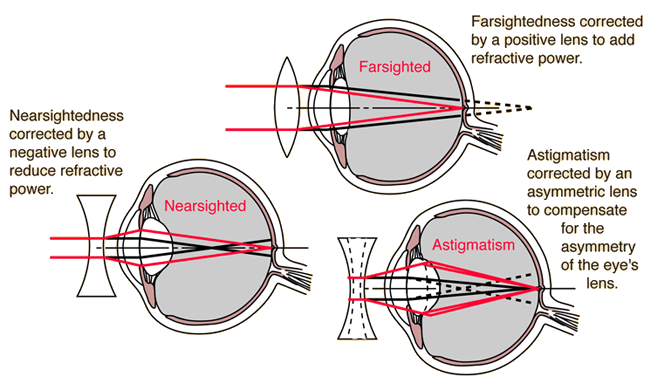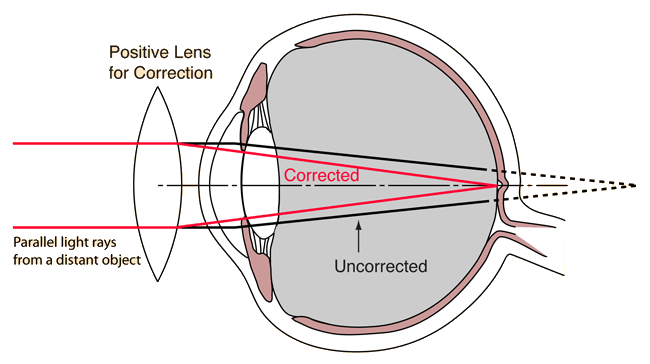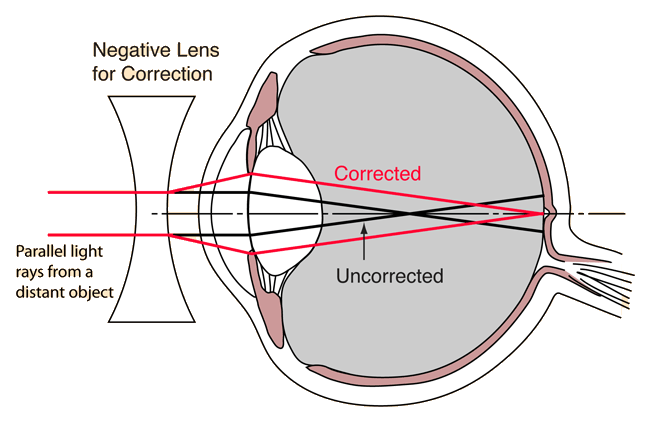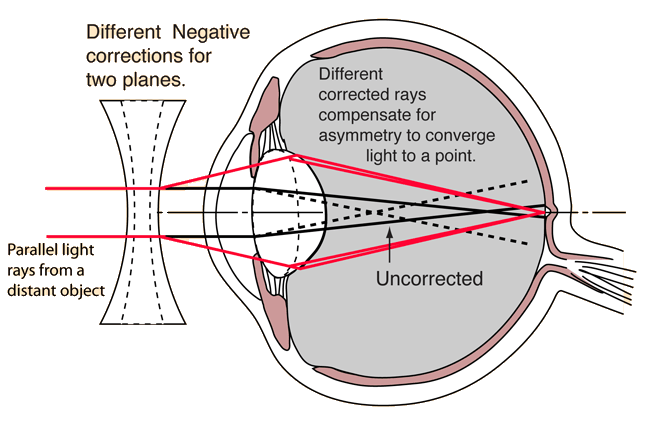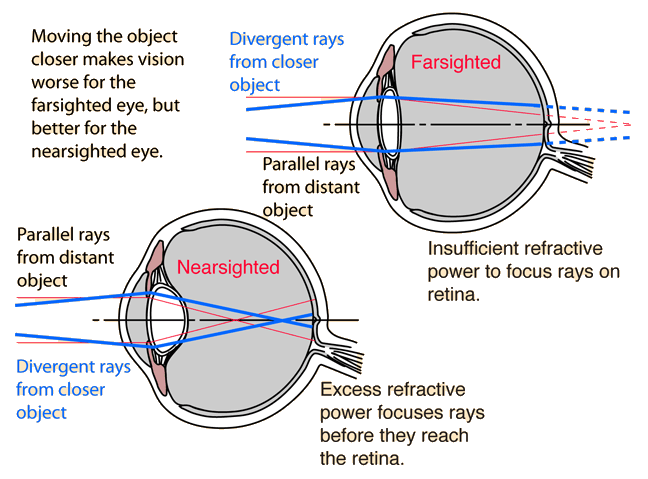Common Vision Defects

This depicts the effects of rather extreme cases of nearsightedness, farsightedness and astigmatism on the paths of parallel input rays, which would be characteristic of objects at effectively infinite distance, like looking at the moon. In these extreme cases, neither the farsighted eye nor the nearsighted eye would see the moon clearly. The nearsighted eye refracts the light too much, focusing at a position before it reaches the image-detecting retina. The farsighted eye does not refract the light enough, and cannot bring the rays to a focus by the time they reach the retina.
The diagrams also assume a relaxed eye, in which case the focal length of the eye's interior lens is at a maximum. The eye's effort in accommodating to view closer objects involves muscle tension that results in the interior lens being more rounded and therefore of shorter focal length (greater refracting power). In the cases depicted here, accommodation might be sufficient to bring the moon into focus for the farsighted eye, but would work against the nearsignted eye.
If the object to be viewed is brought closer to the eye, then you would expect that the image would be worse for the farsignted eye and better for the nearsighted eye. An example for an intermediate distance might be instructive.
| Intermediate distance example |
| Show corrected vision | Effect on accommodation |
Vision concepts
| HyperPhysics***** Light and Vision | R Nave |
